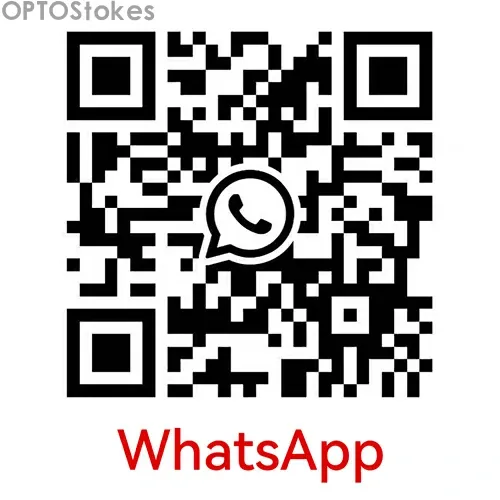Introduction: Filters – The "Eyes" Behind Reliable Machine Vision
As automation transforms global manufacturing, machine vision systems serve as the "eyes" of machines, handling inspection, measurement, identification, and guidance. Yet industrial environments pose harsh challenges: intense ambient light, harsh specular glare, and invisible infrared (IR) interference. The solution to focusing on critical information while ignoring noise lies in a small but vital component: optical filters.
Machine Vision Optics: How Filters Fulfill Their Role
A standard industrial machine vision system follows this optical path: Light Source → Object → Lens → Filter → Image Sensor → Processor. Here’s the breakdown:
- A controlled light source illuminates the target object.
- The object reflects, transmits, or scatters light toward the lens.
- The lens collects the light signal.
- The filter acts as a "gatekeeper," screening the light before it reaches the sensor.
- The image sensor (either
CCD- Charge-Coupled Device orCMOS- Complementary Metal-Oxide-Semiconductor) converts light to electrical signals. - The processor analyzes the image data.
Using principles of light-matter interaction (absorption, interference, polarization), filters perform three critical tasks:
- Boost
SNR(Signal-to-Noise Ratio): Block ambient/stray light, letting only "signal light" from the controlled source pass through. - Enhance contrast: Transmit wavelengths most relevant to target features, making defects or characters stand out.
- Protect sensors: Filter high-energy ultraviolet (UV) or intense IR radiation to prevent sensor damage.
Without filters, machine vision systems would produce blurry, overexposed, or noisy images—rendering inspection or measurement unreliable.
Filter Applications: Solving Industry-Specific Challenges
Filter selection depends entirely on the optical challenge. Below is a detailed breakdown of common scenarios, with key parameters and principles:
| Application | Challenge | Solution | Key Principles | Critical Parameters |
|---|---|---|---|---|
| Metal Surface Scratch/Character Inspection | Specular glare masks small scratches or printed characters. | Polarizing Filter | 15-30° low-angle illumination; cross-polarization (source polarizer perpendicular to lens polarizer) blocks glare, transmits scattered light from scratches. | Extinction Ratio: >1000:1 Transmission: >40% Polarization Direction: Linear |
| LCD/OLED Mura Defect Detection | Ambient light drowns out subtle brightness unevenness (Mura). | Narrowband Bandpass Filter | Darkroom setup; filter transmits only the screen’s peak emission wavelength, blocking mismatched ambient light. | CWL (Center Wavelength): Matches screen peak (e.g., 525±2nm) FWHM (Full Width at Half Maximum): 10-20nm Blocking Depth: OD>5 (300-1100nm) |
| High-Temperature Workpiece Sizing | IR thermal radiation from hot metal causes overexposure. | Blue Bandpass Filter | High-power 450nm blue LED illumination; filter transmits blue reflection, blocks 800-1200nm IR. | CWL: 450±2nm FWHM: 30-50nm IR Blocking: OD>6 (800-1200nm) |
| Food Sorting/True Color Recognition | Ambient light changes & IR sensitivity distort color accuracy. | IR Cut Filter / ND Filter | IR Cut blocks 700-1100nm IR (matching human vision); ND uniformly reduces light to avoid overexposure. | IR Cut: Cutoff 650-700nm, Visible Transmission >90% ND Filter: OD Value (e.g., OD0.6 = 25% transmission) |
Key Filter Parameters: A Selection Foundation
Understanding these parameters ensures you choose the right filter for your system:
CWL (Center Wavelength): The wavelength with maximum transmission. Must match the light source’s peak wavelength (e.g., 450nm for blue LEDs).FWHM: The wavelength range where transmission is 50% of the peak. Narrower FWHM (10-20nm) = better noise rejection; wider FWHM (30-50nm) = higher light throughput.Blocking Depth: Measured inOD(Optical Density); OD4 = 0.01% transmission, OD6 = 0.0001% transmission. Critical for blocking stray/IR light.Extinction Ratio(Polarizing Filters): Ratio of transmission for parallel vs. perpendicular polarization. Higher ratios (>1000:1) = better glare suppression.Angle of Incidence (AOI): AOI >15° shifts CWL to shorter wavelengths; account for this in lens-filter alignment.
Core Selection Strategy: Ask the Right Questions
Filter selection is a systematic process—start by answering these two questions:
- What is the interference source? Ambient light? Specular glare? IR radiation? Overexposure?
- What is the target signal light? Reflected light from a specific LED? Polarized scattered light? The object’s own emission?
Matching the filter’s parameters to these answers ensures optimal performance.
OPTOStokes: Your Machine Vision Filter Partner
If you’re struggling with glare, overexposure, or color distortion in your machine vision system, OPTOStokes offers filters tailored to industrial needs. We provide a wide range of off-the-shelf filters (polarizing, bandpass, IR cut) and custom solutions—matching your light source wavelength, AOI, and blocking requirements. Our filters meet international quality standards, with controlled lead times to keep your production on track.
Need help selecting the right filter for your application? Email sales@optofilters.com or leave a message on our website. Our team of optical engineers will analyze your system’s challenges and recommend a precise, reliable solution.


